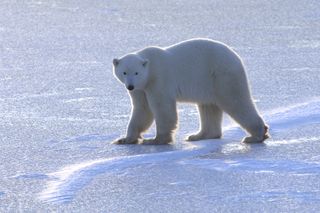How Polar Bears Survive on 'Heart Attack' Diet

If humans ate the same fatty foods as polar bears, they would have heart attacks. But a new study reveals how these magnificent Arctic beasts survive on such a specialized diet.
It turns out the beasts have evolved genes that allow them to survive on a diet of mostly seals and the blubber those animals contain, not to mention their sky-high cholesterol levels, without developing heart disease.
The findings, detailed today (May 8) in the journal Cell, also showed that polar bears and brown bears diverged from each other much more recently than previously thought. [See Stunning Photos of a Polar Bear Expedition]
"In this limited amount of time, polar bears became uniquely adapted to the extremities of life out on the Arctic sea ice, enabling them to inhabit some of the world's harshest climates and most inhospitable conditions," study leader Rasmus Nielsen, a theoretical evolutionary biologist at the University of California, Berkeley, said in a statement.
In their study, Nielsen and his colleagues sequenced the complete genomes of 79 polar bears from Greenland and 10 brown bears from around the world. The researchers discovered that polar bears and brown bears branched off from a common ancestor sometime in the last 500,000 years, compared with previous data that suggested the two species diverged up to 5 million years ago.
Since splitting off from brown bears, polar bears have evolved quickly through mutations in genes that play roles in heart function and the metabolism of fatty acids, the study found. These same genes have been linked to human heart disease
The dramatic genetic changes in response to a fatty diet have not been reported before, suggesting that scientists should look beyond standard model organisms in studying the genetic causes of human heart disease, the researchers said.
Sign up for the Live Science daily newsletter now
Get the world’s most fascinating discoveries delivered straight to your inbox.
Follow Tanya Lewis on Twitter and Google+. Follow us @livescience, Facebook & Google+. Original article on Live Science.

Most Popular


